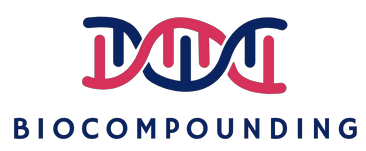A deep dive into the microbiome market landscape

Following on from our previous article, where we covered - what is the microbiome, how it is profiled, challenges and solutions faced and the different sub-segments of the microbiome - Gut Microbiome, Oral Microbiome, Skin Microbiome and Soil Microbiome.
In this article we will do a deep dive into the various sub-segments looking at the market size, funding environment, latest trends and a list of companies in the different sub-segments. So should we get started?
Deep dive into the microbiome landscape
Human Microbiome
Mordor Intelligence estimates that the Human Microbiome market was valued at USD 599 million in 2021 and is expected to grow at a CAGR of 15.04% through to 2027. This increasing market size is supported by evidence of growing publications and clinical trials. The number of publications globally focusing on the human microbiome increased from 1177 in 2010 to over 20867 in 2020. Similarly, the number of clinical trials in the United States has seen strong growth going from 31 studies in 2010 to 632 in 2020.
Apart from traction seen in publications and clinical trials, acquisitions & collaborations of young companies in the microbiome space with big pharmaceutical companies is usually a good indicator of traction. The table below shows that in the Gut Microbiome space (2018-2020) multiple deals were done between smaller microbiome companies and larger pharmaceutical companies.

An additional indication would be to assess the amount of money raised by young microbiome companies in the last couple of years. On this front, a high level of activity was seen with large dollar value amounts raised by these companies.

Apart from the microbiome of the Gut, there are other microbiomes which are gaining the interest of scientist. Some of the emerging trends in the Human microbiome space are:
1) Microbiome-gut-brain axis
2) Metabolic health
3) Healthy aging
4) Women’s health and
5) Gut-skin axis.
These emerging spaces are focused on finding new therapeutics for illnesses that currently don’t have good treatments or have sub-optimal efficacy.
Soil Microbiome
Next looking at the agriculture space, Fortune business insights estimates that the agricultural microbials market will see a CAGR growth of 14.27%, with market size increasing from USD 4.64 billion in 2020 to USD 11.81 billion in 2027.
Crop production is facing many challenges such as climate change, farming intensification, and increasing demand for sustainable production. These demands have led to increased use of chemical fertilizers and growth agents to ensure sufficient production. However, the use of chemicals is resulting in poor soil quality which further increases the use of chemical agents. Furthermore, the chemical agents are also polluting the water sources, resulting in soil erosion, and reducing the nutritional quality of the crops thus creating more challenges in the long term for crop production. To address these issues, research on the soil (rhizosphere – microbe storehouse surrounding the plant root where biological & chemical features of the soil are influenced by the roots) microbiome has gained interest in the past decade. Like humans, plant roots and soil have a symbiotic relationship where each expends significant amounts of energy to help the other. The plants help to make food for the soil microbes while the soil microbes in return help to protect the plants from stress, and pathogens and in converting and holding nutrients in the soil. The diverse potential for soil microbes to significantly impact crop health and growth has thus led to R&D in various areas such as biofertilizers, biopesticides, bioprotectants, microbes, and other potential areas.

The clear benefits of using regenerative farming methods are evident from the above survey which was conducted by L.E.K consulting. Improved soil health, increased soil water retention, reduced cost of inputs and reduced use of synthetic pesticides were the top four reasons for the continued use of regenerative farming practices. This is because these are the biggest issues currently faced by the industry which need urgent solutions.
Similarly, when we look at the funding landscape, it can be seen from the graphs below that increased investments were flowing into the Biofertilizers, Bio-stimulants, and Biopesticides segments.


Other Microbiomes – Skin Microbiome & Oral Microbiome
Two other microbiome spaces which are seeing strong growth are the skin microbiome and oral microbiome. The skin microbiome space studies the microbes that live on the skin of individuals. These microbes play multiple roles in regulating skin barrier function and protecting the skin from external threats. Hence, in recent years there has been an increased interest to understand the skin microbiome better so it can be exploited for uses in skin diseases and personalized beauty & skincare products. The increase in investments in this space is evident from the graph below.

Lastly, the oral microbiome is the study of the microbes that live in the mouth of individuals. It has been reported that after the gut microbiome the oral microbiome is the second-largest microbial community in humans. The oral cavity has two types of surfaces on which bacteria can colonize: the hard and the soft tissues of teeth and the oral mucosa, respectively. The teeth, tongue, cheeks, gingival sulcus, tonsils, hard palate, and soft palate provide a rich environment in which microorganisms can flourish. These microbes play help to ensure good mouth health by preventing tooth decay, preventing bad breath, preventing gum diseases, and might even play a role in digestion. On the investment front, numerous companies are focusing on the oral microbiome space though most are still in the early stages. This indicates a growing interest in the space and VCs such as Indie Bio and SOSV have also reported funding companies in the oral microbiome space in recent years.
Microbiome Company Landscape
Source: Company website, Pitchbook, Crunchbase, other articles
| Company | Description |
|---|---|
| Human Microbiome | |
| Second genome | Established a pipeline of microbiome modulators that impact infection, inflammation, and metabolic diseases. They are currently developing a microbiome drug discovery platform to develop novel therapeutics in a range of diseases, including inflammatory bowel syndrome, as well as liver and metabolic diseases |
| PhenoBiome | Working on developing products across the human, animal, and crop microbiome spaces. They are also helping to develop microbiome-based drugs and diagnostics for cardiovascular, chronic kidney diseases, leaky gut, and colon cancer. |
| Novo Biome | A drug discovery company has notified that they are building NovoSift, a disruptive ex-vivo research and discovery platform which will analyze the symbiotic relationship between the microbiota and the human intestine. |
| Finch | A microbiome engineering company that is developing novel microbial therapies to serve patients with serious and unmet medical needs. |
| Seres Therapeutics | The company is engaged in developing biological drugs which are referred to as ecobiotic microbiome therapeutics. SER-109, the company’s lead product, is designed to prevent further recurrences of Clostridium difficile infection (CDI). |
| Amilii | Developed gut microbiome therapy designed to advance microbiome research to address unmet and critical needs in healthcare. The company collects gut microbiome stools that will be used to advance microbiome research and treatment which will potentially save the lives of patients suffering from infections and other diseases, it has also developed a test aiming to identify the types of gut microbiota, thereby helping medical professionals by advancing human health through microbe science. |
| Blumadien | The operator of a biotechnology platform intended to discover microbiome-derived disease therapeutic services. The company's platform focuses focused on research, development, and future commercialization of breakthrough microbiome-derived solutions for disease tracking, prevention, and therapeutics, enabling the health-tech business to global markets. |
| Enterome | Developed pharmaceuticals and diagnostics tests designed to provide treatment of metabolic and bowel diseases. The company's pharmaceuticals and diagnostics tests are based on the gut microbiome used for the treatment of chronic and challenging medical conditions relating to abnormalities of the bacterial composition of the human intestine, enabling patients to begin treatment more quickly and resulting in a higher likelihood of successful treatment. |
| Lodo Therapeutics | Developed novel cancer and anti-infective therapeutics created to address undruggable targets with high unmet needs. The company applies advanced technologies to tap the vast collections of undiscovered molecules encoded in microbial DNA that is extracted from the environment, enabling healthcare providers to treat drug-resistant microbial infections and cancers. |
| Deepbiome Therapeutics | Drug discovery from the microbiome |
| Vast Biome | Mapping the gut-immune axis to find novel therapeutics for immunological disorders. |
| Empress Therapeutics | The Empression™ product platform uses artificial intelligence and principles from co-evolution and pharmacology to transform patient data into actionable disease insights and therapeutics. |
| Soil Microbiome | |
| Concentric agriculture | Develops sustainable biological products for agricultural applications. They’ve formulated the Concentric Garden Solution, a live-cell biological product that’s made using micro-organisms, including yeasts and bacteria to improve the plant and soil quality |
| Kallyope | Integrates cutting-edge technologies in sequencing, computational biology, neural imaging, cellular and molecular biology, and human genetics to provide an understanding of gut-brain biology that will lead to transformational therapeutics to improve human health |
| Biome Makers | Genomic soil microbiome profiling |
| MicroGen Biotech | A microbial crop input and soil remediation platform. The company’s flagship technology Constructed Functional Microbiome produces microbial products for increasing crop yields and soil health with the goal of food safety. The company’s target market is China because many areas of China have soil contaminated with heavy metals like cadmium. |
| Wanda Organic | Kenyan start-up providing organic bio-fertilizers to small and medium-sized farmers to improve their soil health and yields |
| Pivot bio | Developed microbial nitrogen fertilizers designed to replace synthetic nitrogen fertilizer. The company's fertilizer helps farmers to grow crops that can capture and metabolize nitrogen from the atmosphere, reducing the need for petrochemical fertilizers, enabling farmers to reduce the cost of farming, improve health and create a future with cleaner water and air. |
| Kula Bio | Leader in sustainable nitrogen solutions, helping farmers improve crop yield and reduce environmental impact. We make a cost-competitive biofertilizer that boosts a naturally occurring process to deposit meaningful amounts of nitrogen in the soil. |
| Joyn Bio | We develop high-performing biologicals that will become a new class of sustainable agriculture solutions. |
| Oral Microbiome | |
| BrickBuilt Therapeutics | Provider of healthcare services intended to offer novel treatments for oral health. The company is developing live biotherapeutic products for the prevention and treatment of periodontal disease, caries (cavities), and oral candidiasis (thrush), thereby helping patients by eliminating pathogens, disrupting destructive factors, and maintaining the microbiome. |
| Oralta | Producer of probiotic supplements intended to fight bad breath. The company's supplement is a blend of strains that have been created to restore a healthy equilibrium of beneficial bacteria and thereby eliminate odor-causing bad bacteria naturally and sustainably, enabling users to keep fresh breath. |
| Oragenics | Focused on developing effective treatments for oral mucositis as well as other diseases and conditions of the oral cavity, throat, and esophagus |
| DoseBiome | Focused on innovative oral microbiome research that improves the microbial ecosystem in the mouth by preventing diseases such as dental caries and periodontal conditions. |
| C3J Therapeutics | Mid-sized US-based clinical-stage biotechnology company focused on the discovery and development of novel targeted antimicrobials. One of its lead compounds, C16G2, targets dysbiosis of the oral microbiome and has completed phase 2 clinical trials. |
| Skin Microbiome | |
| Yun Probiotherapy | Develops skincare products containing live biotherapeutic probiotics capable of modulating the skin microbiome, targeting patients with acne |
| S-Biomedic | Develops skin therapeutics for acne using a cocktail of Cutibacterium acnes. |
| AOBiome | Development of its pharmaceutical-grade topical live bacteria, with clinical trials underway to treat conditions like acne, eczema, rosacea, hay fever, hypertension, and migraines. |
| Micreos | Develop endolysins that specifically target Staphylococcus aureus, which causes various skin conditions. |
| Phagelux | Development of bacteriophage-based products to improve skin health through microbiome modulation |
| DermBiont | Developed microbial therapeutics designed to target topical therapeutics that treat, cure, and prevent diseases. The company aims to impact the root causes of skin diseases through the development of targeted small molecule therapeutics with well-defined mechanisms of action as well as with biotherapeutics that repair an imbalance of the microbiome and leverages computational biology and a proprietary bioinformatics platform to identify clinically meaningful dysbiosis related to common skin diseases and mines a curated library of microbes to build a pipeline of products to treat identified dysbiosis across indications, enabling medical practitioners to cure skin disorders and diseases and prevent their recurrence. |
| Sequential skin | Developed a skin testing platform designed to analyze skin genetics and skin microbiome. The company offers a skin kit to assess the skin health of an individual based on molecular analysis and next-generation gene sequencing technology and recommends products and active ingredients suited to their skin, enabling clients to take care of the skin. |
Wrapping it up
The microbiome market has seen tremendous growth in the last few years, this was driven mostly by the push toward the commercialization of microbial products. The use cases are multifold, with products seen for modulating the microbiome in the gut, microbiome in the soil, microbiome on the skin.
One good example would be the current shortage of fertilizers which has recently affected farmers around the world. Due to the shortage of fertilizers, farmers have started using a product offered by Pivot Bio (A microbe that helps in nitrogen fixation). Not only is Pivot Bio’s product a substitute for traditional fertilizers, but their products have also been reported to be cheaper and further improve corn yields compared to traditional fertilizers.
The oral microbiome is still a relatively nascent space, but it should gain traction at an increased pace as all the necessary technologies and know-how is in place to quickly determine the microbial community present in the mouth. This should then lead to new products coming to the market which could help to reduce tooth cavities, remove bad breath and address other issues.
The microbiome space is gaining traction with potential for further growth as consumers see the benefits of using microbes or modulating microbes to replace traditional offerings. The use of microbes also provides a strong sustainability angle, thus creating a push for adoption. These benefits should continue to drive the demand for new & improved bioproducts well into the future.
If you like articles like this one, please do subscribe to our newsletter to stay updated with our latest articles.
Disclaimer: All opinions shared in this article are the opinions of the authors and do not constitute financial advice or recommendations to buy or sell. Please consult a financial advisor before you make any financial decisions.





Comments ()